Illinois Robotics in Space Launches Conversation on NASA and Member Experience
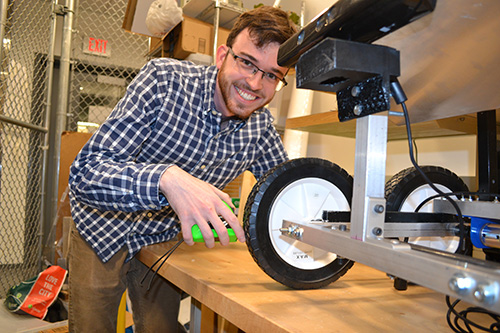
Grant Brucker working on an IRIS robot.
May 23, 2018
The word “lunatic” comes from madness caused by the moon, and the students here at Illinois are certainly crazy for the Illinois Robotics in Space (IRIS). A multidisciplinary RSO (registered student organization), IRIS recently participated in the NASA Robotic Mining Competition on May 14–18, 2018 at the NASA John F. Kennedy Space Center in Cape Canaveral where they were one of 56 teams this year. The goal of the competition was for the robots to autonomously mine gravel as if they were on Mars. In the future, these models could be used to mine icy regolith on the Red Planet, which could potentially help provide oxygen, fuel, and water for settlers.
Members span across several engineering disciplines, with IRIS consisting of a mechanical team, an aeronautical team, an autonomous team, and a systems team. They start preparing for the competition at the start of the school year in August, even testing their code as early as Day 1. The students constantly modify and build on existing code on the software side, while learning from their mistakes and eliminating anything that fails on the autonomous side. About 80% of their funding comes from the Illinois Student Organization Resource Fee (SORF), and the rest comprises of donations from companies that want shout outs or a sticker on the robot. IRIS also engages in community outreach by organizing events like Illinois Space Day and the Engineering Open House, and collaborating with other student organizations such as Women in Engineering, and Women in Aerospace.
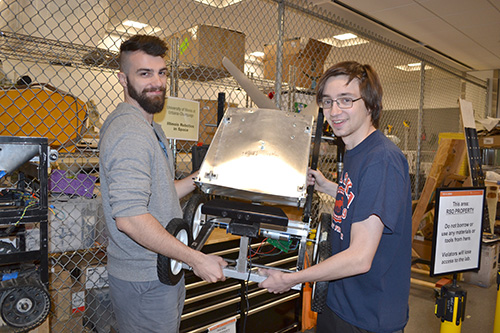
Nikolay Tzankov (left) and Christian Held (right) with one of the IRIS robots.
Of all the benefits this organization presents to its members, perhaps the greatest for new members is that they prioritize exposing freshmen to the realities of the field instead of simply assigning them busy work. It can often be challenging for freshmen to establish themselves in competitive fields such as engineering, but IRIS provides a conducive environment for them to succeed in. Dhruv Patel, who is a sophomore in Electrical & Computer Engineering and a member of IRIS, calls them “one of the most freshman-friendly clubs on campus.” For instance, they try to get freshmen involved in building a new robot every year, instead of just having them come in to see a robot that has already been built. This in turn works as a professional development tool, with Patel saying “I've had multiple interviews and worked for a couple of companies, and whenever I tell them of my time in IRIS, they tell me that IRIS is [what helped me get the job].”
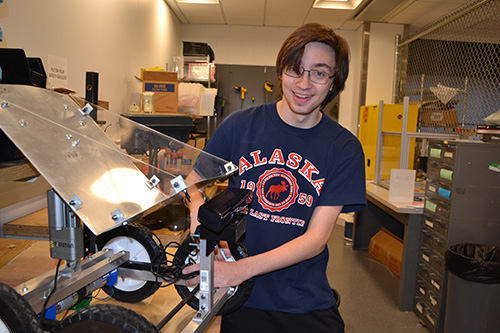
Christian Held, a sophomore member of IRIS working on a robot.
Another member, Christian Held, who is also a sophomore in Electrical & Computer Engineering, says that potential employers have been impressed with the accelerated learning environment presented by IRIS. He recounts an interviewer being surprised that he had worked on printed circuit boards (PCBs) as a sophomore. Held found it humorous given that a fellow member of IRIS sitting right behind him was a freshman who had started designing PCBs. He agrees that freshmen get a leg up by participating in IRIS, citing that although some old members remain to ensure that the team does not go too far astray, 10 out of the 16 people competing in NASA’s competition this year are new members. The club also offers its members a social aspect, with movie nights or making food together. Many of the members emphasize the welcoming environment, where they met some of their closest friends and future housemates.
On a personal level, IRIS gives its members a social support network and a safe environment for them to work in without the fear of getting fired. It also hones soft skills such as time management and working well with people in a professional context. Allowing freshmen to take on key roles gives them a foot in the door in an industry that is growing more competitive every day, while bolstering their confidence in their abilities. IRIS motivates members to strive toward their best work, with Held specifying “We don't require people to spend a lot of time in IRIS, but I do it because I want to.” He goes on to say that his internship last year was about half the workload he had for IRIS over the school year.
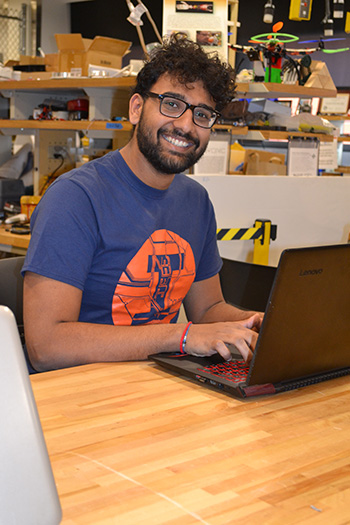
Dhruv Patel, a junior who is a member of IRIS.
Beyond this, IRIS serves as a tool for both professional and leadership development. Nikolay Tzankov, who is a junior in Systems Engineering and an older member of IRIS, says that it provided him with valuable leadership experience and the organizational skills that come with it. Even though his work as a systems engineer is more bureaucratic in nature, Tzankov stresses its vitality in competitions like NASA’s, where they have to submit a systems paper, which is “essentially a high-definition overview of the whole project from conceptualization to execution.” This goes to show the role IRIS plays in reinforcing the technical skills students learn in the classroom and how to apply them when working in the industry.
Although Illinois did not win in any of the categories in NASA’s competition this year, the diligent and positive attitude embodied by its members suggests a bright future for those who participate in this club and the organization as a whole. The work these students are involved in at this early stage of their careers has the potential to inspire groundbreaking innovations in the real world. As Patel jokes, “We'd like to think that NASA is using us for free labor. They take the best of our ideas and incorporate them into designs.”
Story by Niharika Roychoudhury, I-STEM undergraduate student. Photos by Elizabeth Innes, Communications Specialist, I-STEM Education Initiative.
More:
Undergraduate, Engineering, Aerospace Engineering, 2018
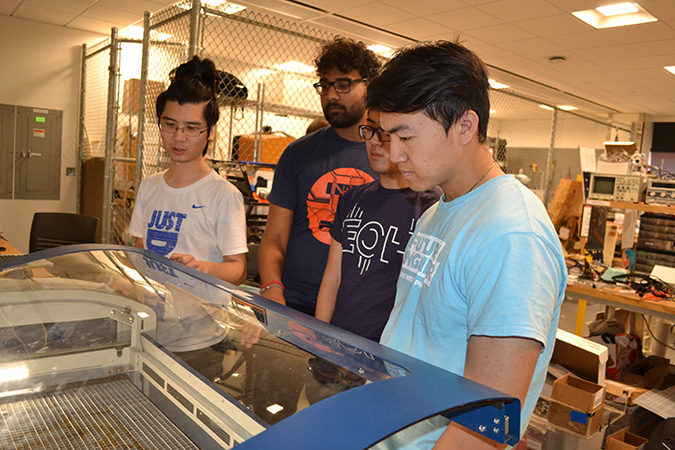
IRIS members working on their robot.













.jpg)
















